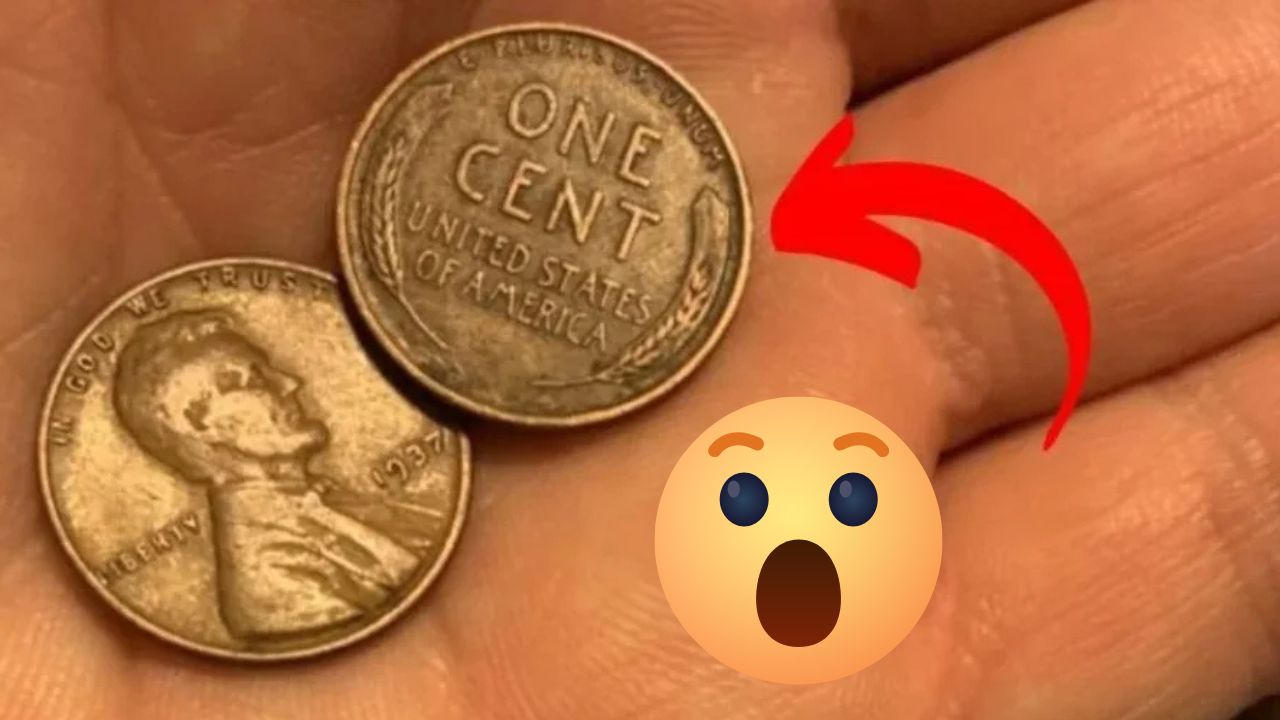The Lincoln Wheat Penny, first introduced in 1909, revolutionized American coinage by featuring a real historical figure—President Abraham Lincoln—on a circulating U.S. coin. Before this, coins typically displayed symbolic figures like Lady Liberty or national emblems such as eagles. Designed by Victor David Brenner, the coin’s front showcases a detailed side portrait of Lincoln, while the back honors America’s agricultural roots with two stylized wheat stalks.
Though the Lincoln cent has seen various design changes over the years, the wheat reverse remained in use until 1958, becoming one of the most iconic and recognizable coin designs in U.S. history. Among these, one edition stands out for its rarity and value: the 1914-D Wheat Penny.
What Makes the 1914-D Wheat Penny So Rare?
In 1914, pennies were minted at three U.S. locations: Philadelphia (no mint mark), San Francisco (S), and Denver (D). The Denver Mint produced just about 1.2 million Lincoln cents that year—a significantly lower number compared to Philadelphia’s 75 million coins.
This limited production made the 1914-D penny instantly scarce. Over time, many were lost, damaged, or worn out, making well-preserved specimens extremely hard to find today. Consequently, the 1914-D penny has become one of the most sought-after Lincoln cents, especially in higher conditions.
Why Are Some 1914-D Pennies Worth Over $4.9 Million?
While most old pennies are only worth face value, a genuine 1914-D Wheat Penny in excellent condition can fetch astonishing prices—sometimes reaching $4.9 million or more at auction. Coins graded as “Mint State” or “Almost Uncirculated” command the highest premiums, showcasing minimal wear and retaining much of their original shine.
Even those with heavier circulation but clear details remain valuable, often selling for hundreds or thousands of dollars depending on their condition.
How to Identify an Authentic 1914-D Wheat Penny
If you think you’ve found one, here’s what to check:
- Obverse (Front): Look for the year “1914” clearly displayed beneath Lincoln’s portrait.
- Mint Mark: Just below the date, a small “D” indicates it was minted in Denver.
- Reverse (Back): The classic wheat stalk design should be visible, with the inscriptions “ONE CENT” and “UNITED STATES OF AMERICA” centered between the wheat ears.
Due to the coin’s high value, counterfeiters often alter dates—such as changing a “4” to look like a “1” on 1944-D pennies to mimic 1914-D. Because of this, professional authentication by trusted numismatic experts or grading services like PCGS or NGC is essential before buying or selling.
Protecting Your Valuable 1914-D Penny
To preserve your coin’s value, follow these tips:
- Don’t Clean the Coin: Cleaning can severely reduce value. Collectors prize the original patina.
- Handle Carefully: Use gloves or hold the coin by its edges to avoid transferring oils or dirt.
- Proper Storage: Store the coin in acid-free holders, flips, or professionally graded slabs to protect it from damage.
The Thrill of Discovering a 1914-D Penny
Even more than a century later, the 1914-D Lincoln Wheat Penny continues to excite collectors. Some have been found in inherited collections, old jars, and even bank rolls. While finding one in your everyday change is rare, it’s not impossible. Stories of lucky discoveries keep inspiring enthusiasts everywhere.
FAQs About the 1914-D Lincoln Wheat Penny
Q1: Why is the 1914-D penny more valuable than other 1914 pennies?
The Denver Mint produced far fewer pennies in 1914 (only 1.2 million) compared to Philadelphia and San Francisco, making the 1914-D much rarer. Its scarcity, combined with collector demand, drives its high value.
Q2: Are there many counterfeit 1914-D pennies?
Yes. Forgers often alter other pennies, like 1944-Ds, to resemble 1914-Ds. This makes professional authentication critical.
Q3: What condition must my penny be in to be valuable?
Higher grades with minimal wear and sharp details fetch the best prices. However, even circulated but genuine 1914-D pennies hold significant value.
Q4: Which grading services are most trusted?
PCGS (Professional Coin Grading Service) and NGC (Numismatic Guaranty Company) are the leading coin authentication and grading authorities, offering reliable certification and protection.
Q5: How can I sell a 1914-D penny?
Once authenticated, you can sell it through coin auctions, reputable rare coin dealers, or certified online platforms such as Heritage Auctions or eBay.
Final Thoughts
The 1914-D Lincoln Wheat Penny is more than just a coin—it’s a tangible piece of American history and a rare collector’s treasure. Its low mintage, unique design, and enduring demand make it one of the most valuable and fascinating pennies in existence.
Whether you’re a seasoned collector or someone who stumbled upon this gem by chance, the 1914-D penny is proof that even the smallest artifacts can hold extraordinary value.
